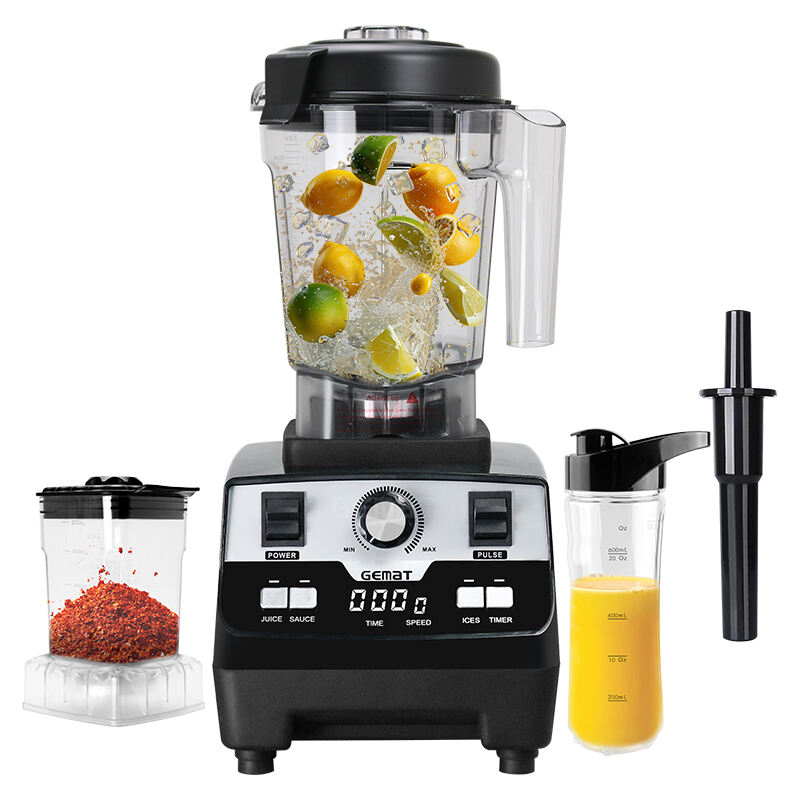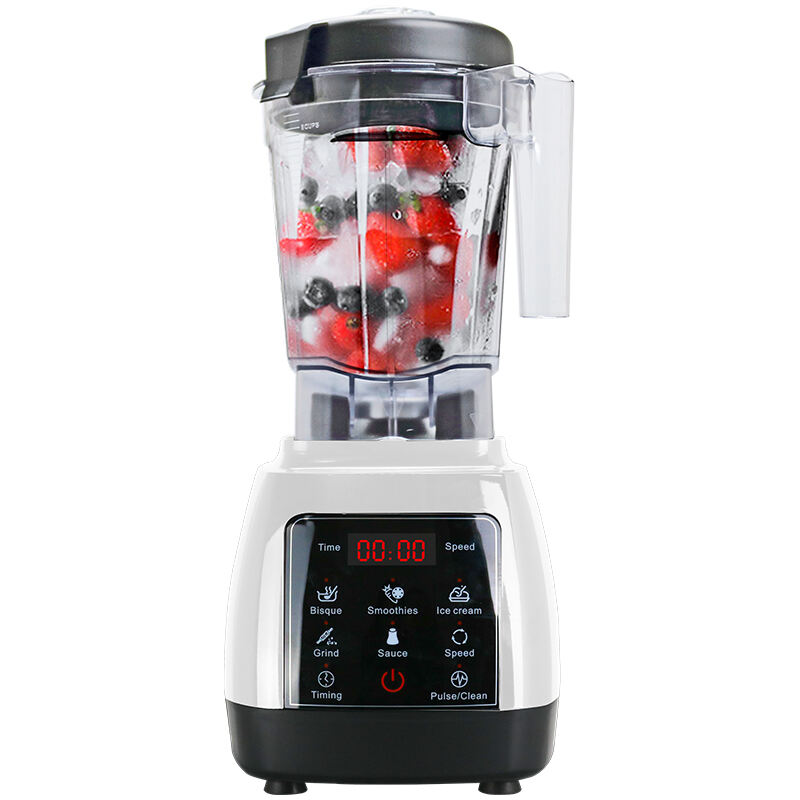Understanding Kitchen Appliance Dynamics
The modern kitchen has evolved into a hub of technological innovation, where appliances play crucial roles in food preparation. At the heart of many culinary debates lies the comparison between the blender machine and food processor. These powerful kitchen allies each bring unique capabilities to your countertop, yet many home cooks find themselves puzzled about which device truly deserves pride of place in their kitchen arsenal.
Both appliances have transformed how we approach food preparation, offering convenience and versatility that previous generations could only dream of. The blender machine excels in creating smooth, liquid-based concoctions, while the food processor boasts exceptional versatility in handling solid ingredients. Understanding their distinct features and capabilities is essential for making an informed decision about which appliance best suits your culinary needs.
Core Features and Capabilities
Blender Machine Characteristics
A blender machine's design focuses on creating vortex-like motion, with sharp blades positioned at the bottom of a tall, narrow container. This configuration particularly excels at processing liquids and soft ingredients. The powerful motor, typically ranging from 500 to 1500 watts, combined with specially designed blades, creates the perfect environment for transforming ingredients into smooth consistencies.
The blender's tall, tapered container helps create a cyclonic action that repeatedly pulls ingredients down toward the blades. This design makes it particularly effective for creating smoothies, purées, and silky soups. Modern blender machines often include variable speed settings and pre-programmed functions for different blending tasks, from crushing ice to making nut butter.
Food Processor Fundamentals
Food processors feature a wider, shallower bowl with interchangeable blades and discs positioned on a central shaft. This design allows for more diverse food preparation tasks, from chopping and slicing to shredding and dough kneading. The wider bowl provides better access to ingredients and makes it easier to remove processed foods.
Unlike a blender machine, food processors excel at handling drier ingredients and can process larger quantities of food at once. The various attachment options expand their versatility, allowing for precise cuts and consistent results across different types of ingredients.

Performance Analysis
Texture and Consistency Control
When it comes to achieving specific textures, each appliance has its strong points. The blender machine consistently delivers smoother results, particularly with liquid-based recipes. Its high-speed blending capability ensures that ingredients are thoroughly processed, resulting in silky smooth textures perfect for beverages, soups, and sauces.
Food processors offer more control over the final texture, allowing you to achieve everything from rough chops to fine minces. This versatility makes them ideal for recipes requiring varying degrees of processing, from coarsely chopped vegetables for salsa to finely ground nuts for baking.
Speed and Efficiency Comparison
Blender machines typically operate at higher speeds, making quick work of smoothies and purees. Their powerful motors can transform ice and frozen fruits into smooth consistencies in seconds. The focused blending action means less time is needed to achieve desired results for liquid-based preparations.
Food processors may take slightly longer for some tasks but offer efficiency in bulk processing. Their larger capacity and specialized attachments mean you can process more ingredients at once, saving time when preparing larger quantities or handling multiple processing tasks.
Practical Applications
Ideal Blender Machine Tasks
A blender machine shines brightest when creating smooth, liquid-based recipes. It's the perfect tool for morning smoothies, protein shakes, and fresh juices. The powerful motor and blade configuration excel at breaking down fibrous fruits and vegetables, creating perfectly smooth green smoothies and pureed soups.
Beyond beverages, blender machines excel at creating creamy sauces, emulsified dressings, and even homemade nut milk. Their ability to create a strong vortex makes them ideal for incorporating ingredients gradually, perfect for making mayonnaise or hollandaise sauce.
Food Processor Specialties
Food processors truly shine when precision cutting and consistency are paramount. They excel at tasks like chopping vegetables, grating cheese, and slicing ingredients uniformly. The ability to switch between different blades and discs makes them invaluable for preparing ingredients for complex recipes.
These versatile machines are also excellent for making dough, whether for pastries, bread, or pasta. The wide bowl and powerful motor can handle heavy doughs that would challenge a blender machine, while the pulse function offers precise control for delicate mixing tasks.
Making the Final Choice
Lifestyle Considerations
Your cooking habits and preferences should guide your choice between a blender machine and food processor. If your routine includes daily smoothies, soups, and sauces, a blender machine might be your primary kitchen companion. Its specialized design for liquid processing makes it indispensable for health-conscious individuals who regularly prepare smoothies and protein shakes.
For those who enjoy cooking from scratch and preparing diverse dishes, a food processor's versatility might prove more valuable. Its ability to handle a wide range of food preparation tasks makes it essential for home cooks who regularly prepare meals from fresh ingredients.
Space and Budget Factors
Consider your kitchen space and storage capabilities when choosing between these appliances. Blender machines generally have a smaller footprint and simpler storage requirements, making them suitable for smaller kitchens. Their vertical design often fits more easily into cabinet spaces.
Food processors, with their various attachments and wider bowls, require more storage space. However, their versatility might justify the extra space requirements for many cooks. When considering budget, remember that quality versions of either appliance represent a significant investment, but their durability and utility often make them worthwhile long-term purchases.
Frequently Asked Questions
Can a blender machine replace a food processor?
While a blender machine can perform some food processor tasks, it cannot fully replace one. Blenders excel at liquid-based preparations but struggle with tasks requiring precise cutting or chopping of solid ingredients. For comprehensive food preparation capabilities, both appliances serve distinct and valuable purposes.
Which appliance is better for making baby food?
Both appliances can make baby food, but a blender machine often produces smoother purées ideal for younger infants. As babies grow and require more textured foods, a food processor becomes more valuable for creating appropriate consistencies and handling larger batch preparations.
How long do these appliances typically last?
Quality blender machines and food processors typically last 5-10 years with proper care and maintenance. The lifespan largely depends on usage frequency, maintenance routine, and initial build quality. Professional-grade models often come with longer warranties and may last even longer.
 Zhongshan city HaiShang Electric Appliances Co,. Ltd
Zhongshan city HaiShang Electric Appliances Co,. Ltd



